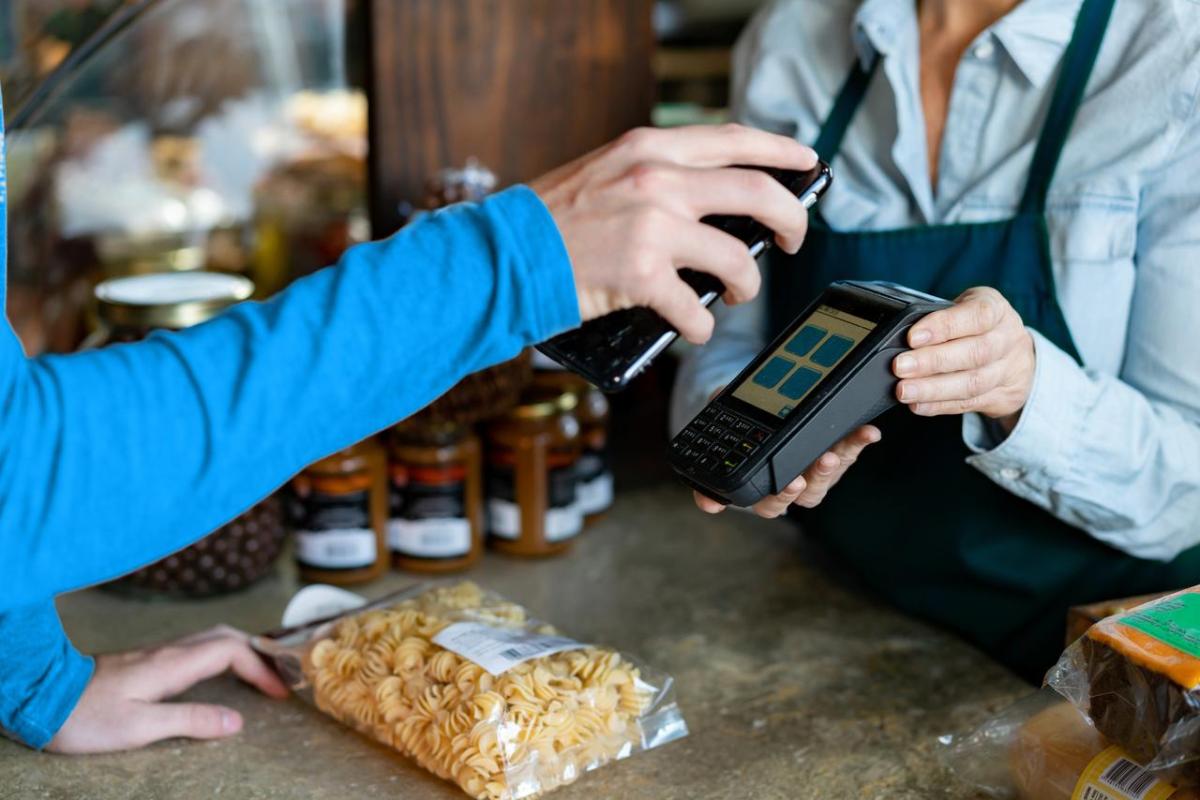Thanks to NFC, information can be exchanged between different devices, due to three fundamental characteristics: it is wireless, short-range and high-frequency. In these elements we can see the first advantages and disadvantages of this system.
As it is a wireless method, it is not necessary for the two devices interacting in the action to be connected to each other, they just need to activate their own configuration – most devices with this technology have a shortcut as simple as clicking on the general control panel.
On the other hand, the frequency is a parameter that establishes the capacity of a signal to change in one second; the higher the frequency, the higher the transmission capacity and the higher the power consumption for its power supply. In the case of NFC, 13.56MHz is typically used and can transfer data at a rate of approximately 420 kbit/s.
Among its weaknesses we have to talk about its radius of action, since as its name ‘near field communication’ indicates, for the devices to communicate they must be at a very short distance of no more than 10 centimetres, limiting, for the moment, the effective uses.
In addition, the National Cryptologic Centre warned that this type of technologies that transmit over the airwaves may be exposed to security problems such as eavesdropping, information alteration or relay attacks.
A veteran technology
NFC technology was approved as an ISO/IEC standard in 2003. This standard is granted by the International Organisation for Standardisation (ISO) and the International Electrotechnical Commission (IEC), which together form the specialised system for the worldwide standardisation of products and services. With this approval, development to implement it began and, in 2008, the first peripherals emerged.
For example, in 2011 Telefónica launched an internal initiative in which they started using NFC on equipment given to employees in District C, within the company’s business city in Madrid, so that they could use it for tasks such as paying for meals or entering the premises through turnstiles. Three years later, Telefónica initiated a process in several Spanish cities to turn them into ‘Smart Cities’, where NFC technology was a mainstay in sectors such as transport.
Among phone manufacturers, Nokia was ahead of its competitors to be one of the first brands to test this type of connectivity, in a limited series of its 3220 and 5140 models. Other companies also followed suit, although it was not until the end of the last decade that mass implementation took place.
Real uses for NFC
The first device to be considered a ‘smartphone’ in history was the IBM Simon, manufactured in 1992 and distributed only in the United States between mid-1994 and early 1995 with a price tag of USD 899. This phone combined personal digital assistant (PDA) functions with a camera and GPS navigator.
The development of its connections and networks led to a revolution from the 2000s onwards, although it was during the 2010s when smartphones experienced a boom that led to a purchase volume of 472 million euros, 31% of all phones sold in the world that year, and a 58% increase over the previous year.
What does this mean for NFC technology? The popularity of smartphones has led users to demand more and more applications, more uses and better tools for which technological development has been a great ally. Nowadays it is common to make payments with your smartphone as if it were your card, to buy tickets on public transport or, as we explained at the beginning, to automatically synchronise one device with another. Some of the most widespread uses are detailed below:
- Data exchange: Although not one of the main uses of this technology, it is one of Google’s ‘hidden’ tools, transmitting data via NFC; a function similar to the widespread ‘Bluetooth’. If both handsets are NFC-enabled, simply bring them as close together as possible to transfer a photo, document or contact from one phone to the other.
- Information: Using RFID (Radio Frequency Identification) tags, we can display information about an event, the address of any location or any other data we need.
- Identification: This technology can be used as a method of access to places that require prior identification, e.g. work offices, campuses or transport passes.
- Payments: Related to the identification of the transport pass, one of the increasingly common uses is to make payments via NFC. To do this, the banking company’s mobile application must have this function, allow the device to be linked to the credit or debit card and we are ready to use our phone as a payment method.Automation: Once again, the relationship between RFID and NFC comes to the fore. Some of these tags can be configured to trigger actions automatically. So you can perform everyday digital actions such as activating your home WiFi network if, for example, you have a sticker at the entrance of your home; or control other devices remotely.
- Synchronisation: This use is similar to the exchange of information between devices, as it allows you to synchronise different devices such as speakers, wireless headphones, printers or even open your car by bringing your phone close to them. This use also rivals ‘Bluetooth’ synchronisation, however, depending on our digital skills the pairing process can be complex on such a system.
- Fashion: Digitization reaches every sector, and in a cross-cutting manner. For those who like sport, there are devices with NFC technology that calculate calories burned during exercise, heart rate and other statistics that can be sent to your smartphone in real time. Fabrics are also in development that can detect the heat and humidity of the human body, which, connected to an application on the phone, can be activated to regulate these parameters. Finally, some technology companies have prototypes of so-called “smart suits” that allow the wearer to perform actions such as unlocking the phone, remotely configuring devices or exchanging digital business cards
A technology with a future?
Perhaps this very question was asked at the turn of the century when NFC technology began its development and, almost two decades later, it is a good time to revisit the issue. Based on its uses, we can confirm that it is an established technology in some sectors of society. A study by ABI Research, sponsored by the NFC Forum, revealed that 85% of consumers surveyed used a mobile payment wallet, while the use of contactless payment cards has increased by 30% in recent years.
The increased frequency of this technology, with greater contactless capabilities, together with health concerns caused by the COVID-19 pandemic and the growth in the use of wearables, smartwatches and mobile phones, mean that, according to survey data from nine countries, 95% of participants have used this technology at some point in the last two years.
For example, almost all South Koreans surveyed reported using NFC technology on a daily basis. In this way, NFC technology will continue to develop in society, following the same path as other systems and trying to solve their problems in order to gain applications in users’ daily lives.







